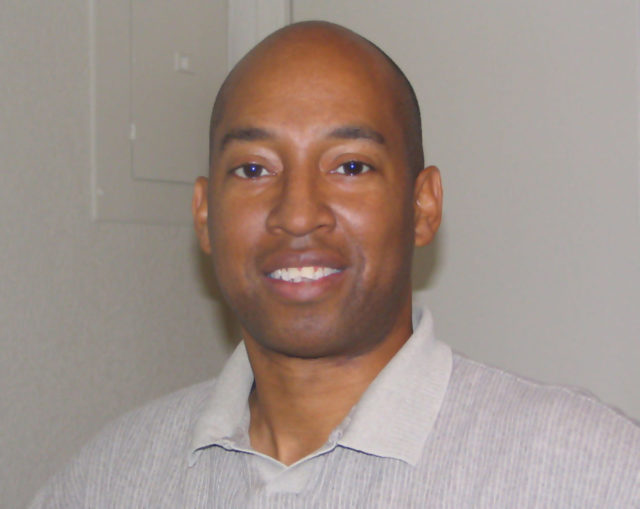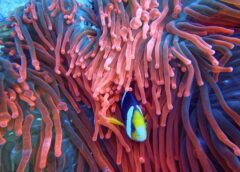- SeaWorld will continue to act on UN SDG 14 to conserve and sustainably use the ocean, seas, and marine resources
- SeaWorld has developed and supported various aquaculture programs that reintroduce healthy and abundant fish populations necessary to sustain sea life
- Restoring coral reef systems has been and remains a priority for SeaWorld in Florida and worldwide
- SeaWorld will maintain its long-term commitment to cleaner and healthier waterways through efforts in its parks – the first theme park to eliminate single use plastic straws and bags – and by supporting external programs to eliminate ocean trash in the communities where it operates and to continue to find ways to reduce and eliminate plastic
ORLANDO, Fla. /PRNewswire/ — Today marks the 30th anniversary of the United Nations’ World Oceans Day and SeaWorld is making its first public commitment to United Nations (UN) Sustainable Development Goal (SDG) 14, which focuses on conserving and sustainably using the world’s oceans and seas. With its nearly 60-year history of taking action to protect marine animals and their habitats, SeaWorld has made significant contributions to help ensure the long-term health and sustainability of marine life. With respect to SDG 14, SeaWorld continues to make meaningful contributions in areas such as aquaculture programs that reintroduce healthy and abundant fish populations, restoring coral reef systems, and contributing toward cleaner and healthier waterways.
“SeaWorld has been advocating for the health and sustainability of the world’s oceans and the creatures that live in it for decades through the rescue of animals in need, advanced marine research made possible by the study of animals in our care, and through funding of third-party programs through our conservation fund, long standing conservation partnerships, and public education,” said Dr. Chris Dold, Chief Zoological Officer of SeaWorld Parks and Entertainment. “We’re proud to stand with other marine advocacy organizations and global leaders in pledging our support and continued action for UN SDG 14 to protect marine habitats and the animals who call the ocean home.”
SDG 14 aims to promote conservation and the sustainable development of the oceans, seas, and marine resources. SeaWorld will ensure that its current and future conservation, research, and animal rescue, as well as in-park sustainability efforts, support several key goals associated with SDG 14, including:
- 14.1 Prevent and significantly reduce marine pollution of all kinds, from land-based activities, including marine debris and nutrient pollution.
- 14.2 Sustainably manage and protect marine and coastal ecosystems to avoid significant adverse impacts, including by strengthening their resilience, and acting for their restoration to achieve healthy and productive oceans.
- 14.5 Conserve at least 10 percent of coastal and marine areas, consistent with national and international law and based on the best available scientific information.
Sustainable Fish Populations
Thriving oceans require healthy and abundant food sources to sustain sea life and to ensure a reliable and sustainable seafood supply for human consumption. Today, entire species of fish are disappearing from our world’s oceans as are the abundant population levels required to sustain some of the ocean’s largest animals like whales, dolphins, walruses, seals and more. As fish populations dwindle and disappear, large mammals are being driven out of their habitats to forage in new areas or face starvation. Some of the ways that SeaWorld is making meaningful contributions in this area today include:
- SeaWorld works with the National Fish and Wildlife Foundation to increase Chinook salmon, the Southern Resident killer whale population’s primary prey base, to increase the quality of killer whale habitat in the Puget Sound/Salish Sea region and to reduce critical gaps in knowledge needed for the effective management of this declining population. This effort was made possible with SeaWorld as the lead sponsor for the establishment of the Killer Whale Research and Conservation Program.
- SeaWorld is a leading sponsor of the Hubbs-SeaWorld Research Institute (HSWRI) which is one of the leading proponents of aquaculture – a type of fisheries replenishment where cultured juveniles are released to grow naturally in the wild and help restore fish populations. Since the early 1980s, it’s been developing the technology and expertise to release millions of white sea bass, a species highly prized by seafood consumers and anglers in California. It is also applying learnings to other marine finfish species in Southern California. HSWRI scientists work across a wide variety of disciplines (nutrition, health, genetics) and collaborate with fishing communities, resource managers and academia, among others, to ensure that fisheries replenishment work is carried out to the highest environmental standards.
Restoring Coral Reef Systems
Coral reefs are some of the most diverse and valuable ecosystems on earth. Globally, they support more species per unit area than any other marine environment, including about 4,000 species of fish, 800 species of hard corals and hundreds of other species. Coral reef structures also buffer shorelines against 97 percent of the energy from waves, storms, and floods, helping to prevent loss of life, property damage and erosion. But many of the ocean’s reef systems are in trouble. None more so today than the Florida Coral Reef Tract that is under siege by a disease that has infected more than 90 percent of the reef with a 100 percent mortality rate for susceptible coral species.
SeaWorld aquarists operate the Florida Coral Rescue Center (FCRC), a state-of-the-art facility established for gene banking and care of Florida corals rescued by wildlife authorities from reefs in advance of the disease line. Home to 18 distinct coral species and more than 700 individual corals, the FCRC provides a safe, stable environment for coral colonies to receive world class care and propagation from a team of coral experts and will play a significant role in the future restoration of Florida’s Coral Reef as part of the Association of Zoos and Aquarium Florida Reef Tract Rescue Project coalition.
“While work continues to better understand and control this disease, we have made the difficult decision to remove healthy coral from ahead of the disease boundary and place them in land-based facilities like FCRC to prevent them from becoming infected, to preserve genetic diversity, and to propagate them for restoration,” said Gil McRae, Director of the FWC Fish and Wildlife Research Institute. “Large numbers of offspring produced by rescued corals will be essential for restoration of Florida’s Coral Reef. These vulnerable rescued corals are thriving under the expert care of the FCRC team and offspring produced by these corals will contribute substantially to restoration efforts.”
In addition, the SeaWorld Conservation Fund has provided financial grants to other programs focused on coral conservation worldwide. These include:
- Project Coral (Europe)
- Global Coral Restoration Project
- Citizen Science- Coral Restoration Foundation
- Coral Reef Conservation, Mexico
Contributing Toward Cleaner and Healthier Waterways
SeaWorld has championed ocean health through actions taken in its parks and support of third-party programs to protect marine habitats in our communities.
In its parks, in 2018, SeaWorld became the first theme park to eliminate all single-use plastic drinking straws and single-use plastic shopping bags. The first of its kind in an American zoological facility, SeaWorld engineered a salt marsh system to naturally enhance a sea turtle life support system. Mimicking the natural function of coastal marsh, the system biologically removes excess nitrogen from water, eliminating the need to do so chemically through the life support system.
Outside of the parks, the SeaWorld Conservation Fund supports the improvement of estuary habitats by funding programs such as:
- Audubon Florida project to replenish an estimated 7 million gallons of water within the Western Everglades at Audubon’s Corkscrew Swamp Sanctuary in partnership with Coca-Cola in Naples, Florida
- Living Lands and Waters focused on removing aquatic debris from the nation’s largest rivers
- Various Texas beach cleanup projects including Texas Adopt a Beach Cleanups and Galveston Bay marine debris cleanups
- Projects across Tampa Bay including Tampa Bay Watch’s Great Bay Scallop Search and Tampa Bay Watch marine debris cleanup
- EarthCorps remove toxic creosote treated debris Puget sound
- Bioengineering plastic-degrading microbes to eliminate plastic waste
“Our work in helping to clean up the Tampa Bay estuary by removing marine debris and rebuilding critical habitat would not be possible without the help of grants from our partners like the SeaWorld Conservation Fund,” said Peter Clark, President and Founder of Tampa Bay Watch. “We’ve welcomed the support of SeaWorld in this effort since 2013 and appreciate their capacity to help fund our efforts to engage large numbers of community volunteers to remove vast amounts of marine debris that endangers a wide variety of fish, birds and other wildlife in our bays and waterways.”
About SeaWorld Parks & Entertainment
SeaWorld Entertainment, Inc. (NYSE: SEAS) is a leading theme park and entertainment company providing experiences that matter, and inspiring guests to protect animals and the wild wonders of our world. The Company is one of the world’s foremost zoological organizations and a global leader in animal welfare, training, husbandry, and veterinary care. The Company collectively cares for what it believes is one of the largest zoological collections in the world and has helped lead advances in the care of animals. The Company also rescues and rehabilitates marine and terrestrial animals that are ill, injured, orphaned, or abandoned, with the goal of returning them to the wild. The SeaWorld® rescue team has helped more than 40,000 animals in need over the Company’s history. SeaWorld Entertainment, Inc. owns or licenses a portfolio of recognized brands including SeaWorld®, Busch Gardens®, Aquatica®, Sesame Place® and Sea Rescue®. Over its more than 60-year history, the Company has built a diversified portfolio of 12 destination and regional theme parks that are grouped in key markets across the United States, many of which showcase its one-of-a-kind zoological collection. The Company’s theme parks feature a diverse array of rides, shows and other attractions with broad demographic appeal which deliver memorable experiences and a strong value proposition for its guests.
SOURCE SeaWorld Parks & Entertainment

Rod Washington: Rod is a blogger, writer, filmmaker, photographer, daydreamer who likes to cook. Rod produces and directs the web series, CUPIC: Diary of an Investigator. He also produces news and documentary video projects. Check out his podcast StoriesThisMoment at https://m3e.d71.myftpupload.com/stm-tncn-podcasts/


